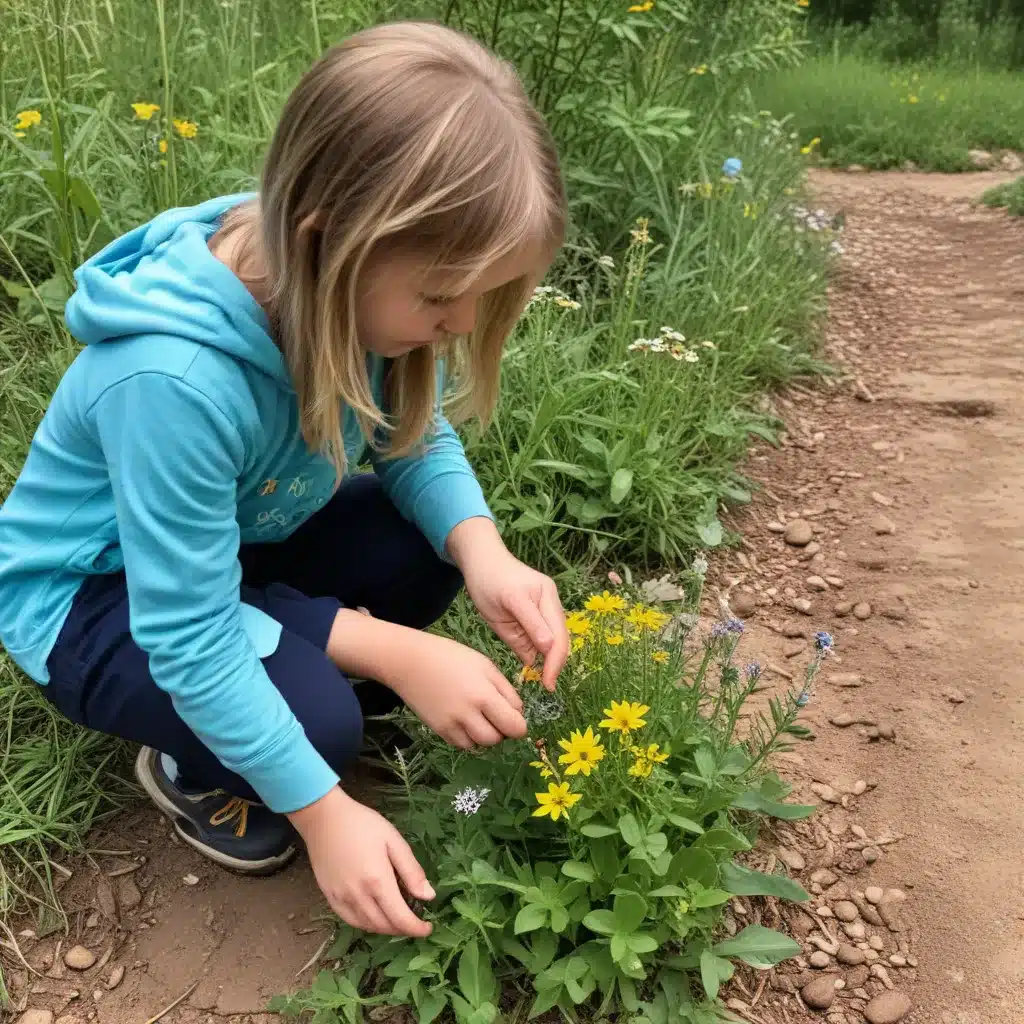
Crooked Pines Farm is a true haven for nature lovers, boasting an expansive network of trails that weave through diverse ecosystems. One of the most captivating features of our nature trails is the vibrant array of wildflowers that bloom throughout the seasons. From delicate spring ephemerals to bold summer showstoppers, these botanical gems offer endless opportunities for exploration and discovery.
Vibrant Wildflower Varieties
As you stroll along the trails, you’ll be greeted by a veritable kaleidoscope of colors and forms. One of the most striking sights is the brilliant orange wood lily, its petals unfurling like flames against the lush green foliage. These native lilies are a true delight, often accompanied by the graceful dance of Monarch butterflies as they sip nectar from the blooms.
Another show-stopping blossom is the butterfly weed, its clusters of fiery orange flowers attracting a variety of pollinators. This plant is closely related to the ubiquitous milkweed, but its vivid hues set it apart. Keep an eye out for the delicate, violet-blue spiderwort, its unusual three-petal structure a testament to the ingenuity of nature.
As you venture deeper into the trail system, you may stumble upon the dainty yellow blooms of the hoary puccoon, a plant that was once used as a natural dye. The fragrant dame’s rocket, with its pinkish-purple flowers, is another intriguing discovery, though it is considered an invasive species in some regions.
Seasonal Blooming Patterns
The timing of the wildflower bloom is a testament to the intricate dance between plants and their environment. In early spring, you’ll find the ephemeral species, such as trilliums and bloodroots, that seize the fleeting moments of sunlight before the forest canopy fully leafs out. As the days grow longer and temperatures rise, the meadows and prairies erupt in a riot of color, with summer-blooming species like coneflowers, black-eyed Susans, and blazing stars.
Even as autumn approaches, the wildflower show continues, with the vibrant reds and oranges of fall bloomers like the asters and goldenrods. These late-season flowers not only delight the eye but also provide critical sustenance for pollinators preparing for the long winter ahead.
Ecological Niches
The diverse array of wildflowers found along the nature trails at Crooked Pines Farm reflects the rich tapestry of ecosystems that make up our property. Each species has evolved to thrive in a specific set of environmental conditions, from the well-drained soils of the upland prairies to the moist, shaded understories of the forested areas.
By observing the wildflowers, you can gain insights into the subtle variations in soil moisture, sunlight exposure, and other factors that shape the landscape. For example, the presence of moisture-loving species like marsh marigolds and cardinal flowers indicates areas with higher water tables, while the dominance of drought-tolerant plants like yuccas and prickly pears points to drier, more exposed conditions.
Navigating the Nature Trail
Exploring the nature trails at Crooked Pines Farm is a captivating experience, but it’s important to be mindful of your surroundings and the delicate balance of the ecosystems you’re exploring. Our well-marked trails guide you through the various habitats, with strategically placed signs and markers highlighting key features and points of interest.
As you traverse the trails, you’ll encounter a range of terrain, from gentle slopes to occasional rocky outcroppings. While the trails are generally accessible, we recommend sturdy footwear and being prepared for some uneven surfaces. And of course, keep an eye out for the diverse array of wildlife that calls our nature trails home, from skittish whitetail deer to the melodious songbirds that serenade you along the way.
Preserving the Natural Environment
At Crooked Pines Farm, we take great pride in our role as stewards of the land, and we’re committed to preserving the delicate balance of our natural ecosystems. As you explore the nature trails, we ask that you please stay on the designated paths, as wandering off-trail can inadvertently trample and damage the very wildflowers you’ve come to appreciate.
We also encourage you to learn more about the importance of native plant conservation and the role that each of us can play in supporting healthy, thriving ecosystems. Consider incorporating some of the wildflowers you’ve discovered into your own home garden, or volunteer with local organizations dedicated to restoring and protecting natural habitats.
Photographic Opportunities
The nature trails at Crooked Pines Farm offer endless opportunities for budding and seasoned photographers alike. Whether you’re capturing the intricate details of a single blossom or aiming to immortalize the sweeping vistas of our meadows and woodlands, the changing seasons and diverse array of wildflowers provide a constantly evolving canvas.
When photographing the wildflowers, pay attention to the bloom timing, as certain species may only be in their prime for a brief window of time. Experiment with macro photography techniques to highlight the delicate structures and vibrant colors of the individual flowers, and don’t be afraid to get low to the ground to capture unique perspectives.
For landscape compositions, consider incorporating the wildflowers as foreground elements, using their vibrant hues to draw the eye through the frame. And remember, the changing light throughout the day can dramatically alter the mood and feel of your images, so be prepared to return to your favorite spots at different times to capture the full range of photographic possibilities.
As you venture out onto the nature trails at Crooked Pines Farm, prepare to be enchanted by the incredible diversity of wildflowers that grace our property. From the bold, attention-grabbing blooms to the more delicate and ephemeral species, each plant has a story to tell about the intricate web of life that sustains our beloved farm. So grab your hiking boots, your camera, and your sense of wonder, and let the wildflowers of Crooked Pines Farm capture your imagination.


